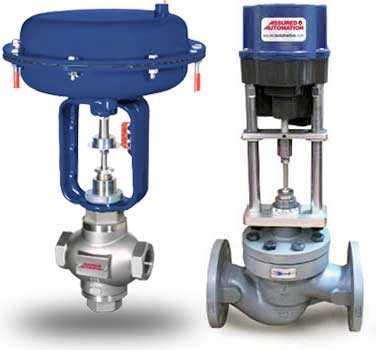
Maximize Energy Cost Savings and Comfort With Advanced Building Automation Controls
In the world of modern-day design and center monitoring, the assimilation of innovative structure automation regulates stands as a crucial improvement. By harnessing the power of automation, buildings can adjust, react, and evolve in ways that were as soon as unbelievable.
Energy Performance Advantages
Energy performance benefits can significantly lower energy intake and functional prices in structures. By carrying out energy-efficient techniques and innovations, building owners and operators can attain considerable savings while also adding to environmental sustainability. Among the primary benefits of improving energy performance in buildings is the decrease of energy expenses. Energy-efficient systems, such as innovative building automation controls, can enhance the usage of sources like heating, illumination, and air conditioning, resulting in reduced energy expenditures gradually.
In addition, enhanced energy efficiency can extend the life expectancy of structure devices and systems. By operating a lot more successfully, HVAC systems, light, and various other building parts experience less deterioration, resulting in lowered maintenance and substitute expenses. In addition, energy-efficient structures frequently regulate greater property values and rental rates, offering lasting financial benefits to proprietors.
In addition, energy efficiency can boost occupant comfort and productivity. Effectively managed interior environments with optimal lighting and thermal conditions develop an even more favorable and enjoyable work space, bring about boosted employee fulfillment and efficiency. Generally, the energy effectiveness benefits associated with innovative structure automation controls are complex, including price financial savings, ecological stewardship, and resident wellness.
Boosted Convenience Control
Enhancing comfort control in building atmospheres requires a sophisticated assimilation of advanced automation systems for optimum resident wellness. By making use of innovative building automation controls, centers can tailor the interior environment to fulfill the certain demands and preferences of owners. These systems enable accurate law of lights, temperature level, and ventilation, developing a efficient and comfy atmosphere. Owner contentment and productivity are closely linked to thermal convenience, making it necessary to have systems in area that can adjust to altering problems in real-time.
Enhanced comfort control surpasses basic temperature modifications. It consists of functions such as tailored settings, occupancy sensing units, and natural light use to develop a responsive and vibrant environment. By incorporating these sophisticated controls, structures can not just enhance convenience but likewise enhance energy effectiveness by optimizing system procedures based upon real occupancy and use patterns. Eventually, prioritizing passenger convenience with sophisticated automation systems leads to an extra satisfying and healthier indoor environment.
Functional Performance Improvements

Moreover, the implementation of real-time tracking and analytics devices allows structure drivers to recognize power inefficiencies and functional anomalies without delay. By continuously checking power usage patterns and system efficiency metrics, changes can be made in real-time to maximize power usage and ensure peak operational effectiveness. control valves. In addition, integrating need action approaches right into structure automation controls can even more enhance functional performance by dynamically adjusting energy usage based upon grid conditions and pricing signals
Indoor Environment Optimization
Effective indoor climate optimization is an essential element of building automation controls, making sure owners' convenience and health while optimizing power cost savings. By using innovative sensors and controls, building automation systems can constantly keep an eye on try these out and adjust temperature, humidity degrees, air high quality, and air flow to create an ideal indoor environment. Preserving consistent and comfortable conditions not just improves resident complete satisfaction but additionally increases performance and total wellness.
Indoor climate optimization additionally plays an important duty in energy performance. By fine-tuning home heating, cooling, and ventilation systems based on real-time data and occupancy patterns, building automation controls can dramatically decrease power usage - control valves. Applying techniques such as demand-controlled ventilation and thermal zoning can help reduce energy waste while making certain that each area of the structure gets the necessary conditioning.

Sustainable Environment Development
Structure automation regulates not just enhance indoor environment problems for power effectiveness and owner comfort but additionally lay the structure for creating a lasting setting through calculated management of sources and systems. By incorporating sophisticated building automation modern technologies, such as sensors, actuators, and intelligent software, centers can monitor and readjust energy usage in real-time to decrease waste and minimize their carbon find here impact. These systems allow predictive maintenance, determining potential concerns before they intensify and optimizing tools performance to enhance longevity and performance.
In addition, sustainable setting production expands past power administration to incorporate water conservation, waste reduction, and interior air quality enhancement. Building automation controls can control water usage, detect leaks, and make sure correct waste disposal techniques, adding to total sustainability efforts. Additionally, by managing and keeping an eye on ventilation and purification systems, these innovations boost owner wellness and performance while decreasing power usage connected with HVAC procedures.
Conclusion
Finally, advanced structure automation manages offer substantial benefits in terms of power cost savings, convenience control, functional efficiency, interior environment optimization, and creating a sustainable atmosphere. By executing these controls, buildings can attain ideal performance while reducing power consumption and improving occupant comfort. It appears that making use of innovative automation modern technology is important in enhancing structure efficiency and producing an extra lasting future.
Power effectiveness benefits can considerably minimize power intake and functional expenses in buildings. Overall, the power efficiency benefits connected with sophisticated building automation controls are informative post diverse, encompassing expense financial savings, environmental stewardship, and occupant health.
Furthermore, including demand response approaches right into structure automation controls can better improve operational efficiency by dynamically changing energy use based on grid problems and prices signals.
Structure automation regulates not only enhance interior environment conditions for power performance and resident comfort however likewise lay the structure for developing a sustainable environment via calculated administration of systems and sources.In conclusion, progressed building automation regulates deal considerable advantages in terms of power financial savings, comfort control, operational performance, indoor climate optimization, and producing a lasting setting.